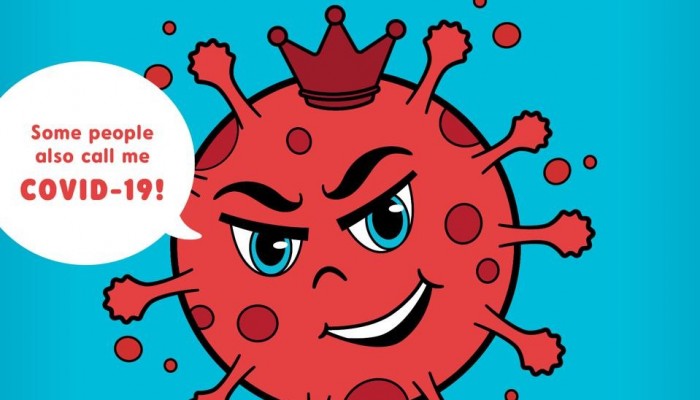
Apr
Prudence Mahirwe Elected First Female Guild President of KIU Western Campus
April 19, 2024, 1:47 pm
 Collins Kakwezi
Collins Kakwezi

KIU, Western campus - The COVID-19 pandemic caught most of us unawares, turning life as we knew it on its head, birthing a new term, “The new normal”
Even though we were unprepared for this pandemic, there are plenty of books that lay out how they work in detail. Here are a few that help illuminate the current pandemic, look back to past crises to inform our future, and challenge us to think critically about how we got here.
1. The Rules of Contagion by Adam Kucharski.
Understanding the pandemic means requires more than learning about how viruses spread. It also requires knowing how information, science, and policy sweep across the globe all at the same time and shape our response to the virus. In The Rules of Contagion: Why Things Spread and Why They Stop, mathematician Adam Kucharski walks through the broad principles that drive contagion in fields from memes to misinformation. Those principles are also going to play a key role in predicting how long this pandemic will last, and how we can control it.
2. COVID-19: The pandemic That Never Should Have Happened and how to Stop the Next One by Deborah McKenzie.
In COVID-19: The Pandemic that Never Should Have Happened and How to Stop the Next One, one of the first books to look specifically at this pandemic, reporter Debora MacKenzie examines how governments fumbled the early stages of the coronavirus. She illustrates how, if we had acted prudently years ago, we could have predicted and stopped this disaster.
Ultimately MacKenzie lays out how we might finally learn from our mistakes thanks to Covid-19, making this virus a turning point in how the world collectively acts to prevent outbreaks.
3. The Coming Plague: Newly Emerging Diseases in a World out of Balance by Laurie Garrett.
This book was first published in 1994, but science journalist Laurie Garret’s journey to convince the world that new diseases are a persistent threat to survival hits different in 2020. (She also went on to win a Pulitzer Prize for her reporting on Ebola in 1996).
Garrett tells a story of scientific and political hubris. At the beginning of the 21st century, she argues that humans had begun to discount the threat that microbes pose to our lives. This book thrives on Garrett’s reporting and outlines how trends like antibiotic resistance and man-made changes to the environment set the stage for new pandemics.
Two decades later, we’re living out the consequences. The New York Times called this book scary back in the nineties, but it’s even scarier now.
4. The Hot Zone: The Terrifying True Story of the Origins of the Ebola Virus by Richard Preston.
The Hot Zone is a classic and acclaimed piece of science reporting that details an Ebola outbreak at a primate facility in Virginia. It goes on to trace the origin of the virus and the public response to it.
Preston’s fascination with Ebola began with a New Yorker piece that outlines the emergence of the illness and shows just how much it scared some of the world’s top scientists.
His book expands on that reporting in a thriller-like way. When horror writer Stephen King read the first chapter he called it “one of the most horrifying things I’ve ever read.” It’s a complete picture of the trial and error process behind studying brand new viruses when the stakes are incredibly high. It feels especially poignant right now.
5. The Ghost Map: The Story of London’s Most Terrifying Epidemic and How it Changed Science, Cities and the Modern World by Steven Johnson.
In 1854, an outbreak of cholera on Broad Street in London killed 616 people. As scientists searched for evidence of an airborne disease, physician John Snow used statistics to draw a map that traced the illness back to a water pump. Removing the handle on that pump eventually saved hundreds of lives. This story has been retold hundreds of times in public health circles, and Snow has been called “the first true disease detective” and “the father of epidemiology.”
The Ghost Map tells this story in vivid detail but also highlights other scientists were also pioneers in public health – from assistants that knew patients well enough to trace the source of infection, to unacknowledged scientists who identified the bacteria that causes cholera.
6. Severance: A Novel by Ling Ma
Sometimes, the best way to learn about a pandemic isn’t to learn about virology or epidemiology. Sometimes we learn a lot about how we feel about the pandemic by experiencing it through a character.
Severance takes place in fall 2011 after an outbreak of a fictional fungal illness called “Shen Fever” (originating in Shenzhen, China). This illness forces victims to incessantly repeat tasks before they die — this is actually how many zombie-like fungi kill insects in real life. The story follows one of the last survivors as she travels West from a desolate New York.
This book speaks to the struggle of managing nostalgia for the way things once were with the need to embrace the current reality in order to survive.
A version of this article was originally published on inverse.com.
Picture credit: Forbes
Kampala International University,
Box 20000, Ggaba Road, Kansanga, Kampala